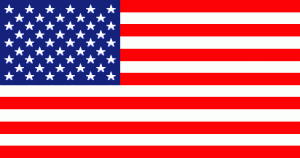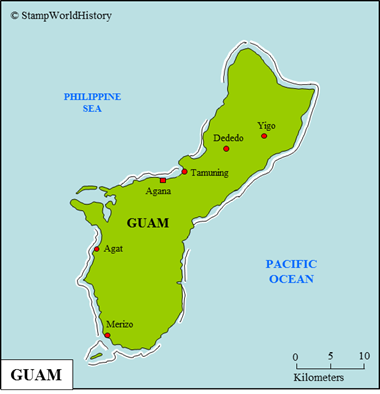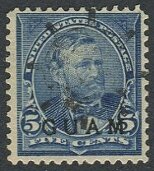
Guam
Quick reference
General issues: United States military administration 1899-1901
Country name on general issues: Guam
Special issues: Local issues 1930-1931
Currency: 1 Dollar = 100 Cents 1899-1901
Population: 9 000 in 1899, 18 500 in 1930
Political history Guam
Guam is located in the northwestern Pacific Ocean and is the southernmost of the Mariana Islands. The native population are the Chamorro, a Micronesian people. The first European to explore the Mariana Islands was the Portuguese explorer Ferdinand Magellan in the service of Spain in 1521, when circumventing the world. The Spanish formally claimed the islands in 1565 and actively colonized the Mariana Islands from 1668, first administering the islands from Mexico and, from 1817, from the Philippines. Spanish rule came to an end in the late 19th century. As an outcome of the 1898 Spanish-American war – initiated in the Caribbean and extended to the Pacific – the United States annexed Guam. In 1899, Spain sold the other Mariana Islands to Germany.
As a United States territory, Guam was initially administered by a governor appointed by the United States Navy. During WWII, Guam was occupied by Japan between 1941 and 1944. Until 1950, Guam was a so called ‘unincorporated, unorganized’ territory. Unincorporated means a territory is not part of the United States and thus, for example, is not represented in the United States House of Representatives. Unorganized means no specific legislation has been passed by the House of Representatives to define the civil and administrative rights of a territory. Guam became an organized territory in 1950 when the House of Representatives passed the Guam Organic Act. Among other things, through this act, Guam citizens became United States citizens. Also, since 1950, Guam is administered by a governor appointed by the United States Department of the Interior. Guam has a major United States military presence: about one third of the island is taken up by air force and navy bases.
Economically, Guam has long depended on subsistence agriculture. Since WWII, first support of the military presence, and later tourism have become the main economic activities. The native population greatly decreased during Spanish rule. In the 19th century the population became multi ethnic through immigration from different Asian and Pacific countries, in particular from the Philippines.
Postal history Guam
In Spanish times, stamps from the Philippines were used. When the United States occupied Guam, stamps were issued by the naval authorities in 1899 – stamps of the United States overprinted ‘Guam’. In 1901, the postal services were transferred to the civilian administration and since then the general issues of the United States have been used on Guam, although existing stock of the 1899 issue remained in use for several years.
A local service, initiated by the governor of Guam, operated in 1930 and 1931 to connect the capital of Agana[1]The current Hagåtña. and other towns on the island. Stamps were issued in 1930 – both provisionals and definitives. The provisionals were stamps of the Philippines overprinted ‘Guam Guard Mail’. The definitives have the same designation and show the coat of arms of Guam. The local service was incorporated in the regular United States postal service in 1931.
Album pages
← Previous page: Gilbert & Ellice IslandsNext page: Kiribati →




“In 1998, the Guam Legislature changed the name from “Agana” back to the original Chamorro/Chamoru form … Hagåtña” — Wikipedia article Hagåtña, Guam
William
Thanks. I addressed the change of name in a note – and now corrected the spelling.